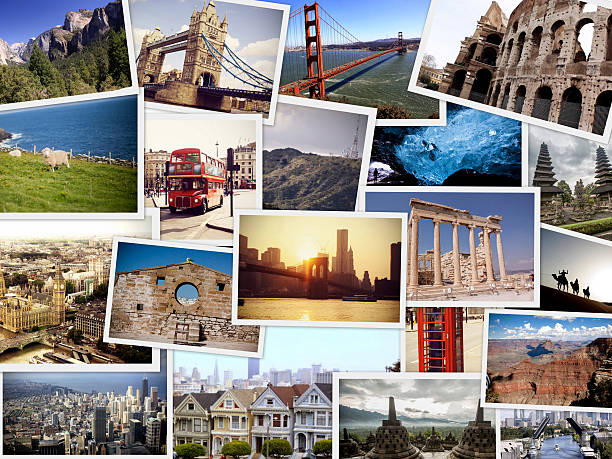Travel blogging has evolved from a niche hobby into a full-fledged career for many adventurers around the world. With the rise of social media platforms and increased access to the internet, travel bloggers have the ability to share their stories, experiences, and tips with a global audience. But more than just sharing adventures, travel blogs have become a viable source of income.
In this blog, we’ll explore how to turn your travel blog into a money-making machine. From choosing the right web hosting to understanding different monetization strategies, we’ll cover everything you need to know to start earning from your travel blog.

Why Start a Travel Blog?
Before diving into the details of making money from a travel blog, let’s understand why travel blogging has become such an attractive venture.
- Passion for Travel: If you love traveling and sharing your experiences, blogging gives you a platform to do just that.
- Flexibility: A travel blog allows you to work from anywhere in the world. As long as you have an internet connection, your office can be a beach in Bali or a café in Paris.
- Opportunity for Growth: With the right strategy, a travel blog can grow into a business, allowing you to diversify your income streams and build a sustainable career.
Now that we’ve set the stage, let’s talk about the essential first steps: setting up your blog and choosing the right web hosting.
Step 1: Choosing the Right Web Hosting for Your Travel Blog

Before you can start writing and monetizing, you need a reliable web hosting service. Hosting is crucial because it affects your website’s speed, reliability, and overall user experience. A slow or frequently-down website can deter visitors, which means fewer readers and fewer opportunities to make money.
Why Hostinger is the Best Choice for Your Travel Blog
When selecting a hosting provider, there are several factors to consider—speed, customer support, scalability, and affordability. Hostinger ticks all these boxes, making it an excellent choice for new travel bloggers.
- Affordable Pricing: Hostinger offers some of the most competitive prices in the industry. Their shared hosting plans start as low as $1.99/month, making it accessible for anyone starting a travel blog on a budget.
- Fast Performance: Website speed is crucial for both user experience and SEO. Hostinger guarantees fast loading times thanks to their powerful servers and performance-optimized technologies.
- 24/7 Customer Support: If you run into any issues, Hostinger offers round-the-clock support. Their helpful and knowledgeable customer service team is always available to resolve any problems you may encounter.
- Free Domain & SSL: When you sign up with Hostinger, they often offer a free domain for the first year, which is a great perk. An SSL certificate (for secure browsing) is also included, ensuring that your readers feel safe when visiting your blog.
- Scalability: As your blog grows, Hostinger provides easy upgrades to more powerful hosting solutions, such as VPS or cloud hosting. This means that you can scale your site without worrying about performance or downtime.
Setting Up Your Travel Blog with Hostinger
Once you’ve signed up for Hostinger’s hosting plan, setting up your travel blog is easy. Hostinger provides a one-click WordPress installation feature, so you can get your site up and running in no time. Additionally, they offer a variety of free themes and templates designed specifically for blogs.

Step 2: Create Engaging, High-Quality Content
When it comes to blogging, content is king. No matter how well-designed your website is or how great your SEO strategy is, it all boils down to one thing: your content. For a travel blog, this means sharing your unique travel experiences, tips, guides, and stories.
Here are a few content ideas to get you started:
1. Destination Guides
- Write comprehensive destination guides for cities or countries you’ve visited. These guides should cover all the essential details, such as best attractions, local cuisine, tips, accommodation, and transportation.
2. Travel Tips & Hacks
- Share practical travel tips and hacks, such as how to find cheap flights, how to pack light, or how to navigate foreign languages and cultures.
3. Personal Stories & Experiences
- Travel blogs that focus on personal stories and unique experiences tend to be the most engaging. Share anecdotes, lessons learned, and unforgettable moments from your travels.
4. Photographic Travel Journals
- A picture is worth a thousand words, so complement your written content with stunning photographs of the places you visit.
Once your content is live, ensure that it is optimized for SEO to rank higher on Google, and promote it on social media to attract more readers.
Step 3: Monetize Your Travel Blog
Now comes the exciting part: turning your blog into a source of income. There are many different ways to monetize a travel blog, and the best approach often involves diversifying your revenue streams. Here are some of the most popular monetization methods:
1. Affiliate Marketing
Affiliate marketing is one of the most common ways travel bloggers make money. The concept is simple: you promote products or services related to travel, and when someone makes a purchase through your referral link, you earn a commission.
Popular Travel Affiliate Programs:
- Booking.com: Many travel bloggers partner with Booking.com, promoting hotel bookings to their audience in exchange for a commission on each reservation.
- Amazon Associates: You can promote travel-related products on Amazon (such as travel gear, books, or accessories) and earn a percentage of the sale.
- Hostelworld: For budget travelers, Hostelworld offers a great affiliate program, allowing you to earn commissions for each booking made via your referral link.
2. Sponsored Content
As your travel blog grows and gains more followers, you may attract brands who want to promote their products or services on your site. Sponsored content involves collaborating with companies to write posts about their products or services in exchange for payment. This could include sponsored hotel reviews, product promotions, or destination-specific campaigns.
To increase your chances of landing sponsored posts, make sure to maintain high-quality, engaging content, and grow your email list and social media following.
3. Display Ads
Once your blog starts receiving consistent traffic, you can monetize through display ads. Programs like Google AdSense automatically place ads on your website, and you get paid whenever visitors click on those ads.
While display ads can be a passive income source, they generally require a significant amount of traffic to be profitable. However, with time and effort, you can use them as one of your income streams.
4. Sell Digital Products
Selling digital products is a great way to earn money without having to deal with physical inventory. Here are a few ideas for digital products you could sell on your travel blog:
- E-books: Write and sell e-books about travel tips, destination guides, or personal travel stories.
- Travel Planners or Guides: Create downloadable travel planners, itineraries, or packing lists that your audience can purchase.
- Photography Prints: If you’re a skilled photographer, sell prints of your travel photos.
5. Offer Travel Consultancy or Coaching
If you’ve built up a lot of expertise in travel, consider offering one-on-one consultancy or coaching. You could help people plan their dream vacations, offer budget travel advice, or assist with solo travel preparation.
6. Create a Membership or Subscription Program
A membership program offers exclusive content, guides, and other perks to your most loyal readers in exchange for a monthly or yearly fee. For example, you could create a “Travel Insider” club where members get access to detailed travel itineraries, tips, and discounts.
Step 4: Promote Your Travel Blog
To maximize your income from your travel blog, you need to drive traffic to your site. Here are some strategies for increasing your blog’s visibility and attracting a larger audience:
1. Social Media Marketing
- Share your travel content on platforms like Instagram, Pinterest, Facebook, and Twitter. Engaging visuals and stories can help you grow your following and drive traffic to your blog.
2. Email Marketing
- Build an email list and send out regular newsletters with updates, promotions, and valuable travel tips. Offering a freebie (like an e-book or travel checklist) in exchange for email sign-ups can help you grow your list.
3. SEO Optimization
- Optimize your blog posts for search engines by using the right keywords, adding meta descriptions, and building backlinks. This will help you rank higher on search engine results and attract organic traffic.
4. Collaborate with Other Travel Bloggers
- Collaboration is a great way to expand your reach. Partner with other bloggers for guest posts, joint giveaways, or cross-promotions.
Conclusion
Starting a travel blog is not just about sharing your passion for travel; it’s about turning your experiences into a sustainable source of income. By investing in reliable hosting with Hostinger, creating high-quality content, and diversifying your monetization strategies, you can build a profitable travel blog that allows you to work from anywhere in the world.
The journey may take time and effort, but with patience, dedication, and a smart strategy, your travel blog can become a rewarding source of income. Whether you’re traveling to a remote village in Asia or exploring Europe’s famous landmarks, remember: your blog is the key to turning your adventures into a successful business.

